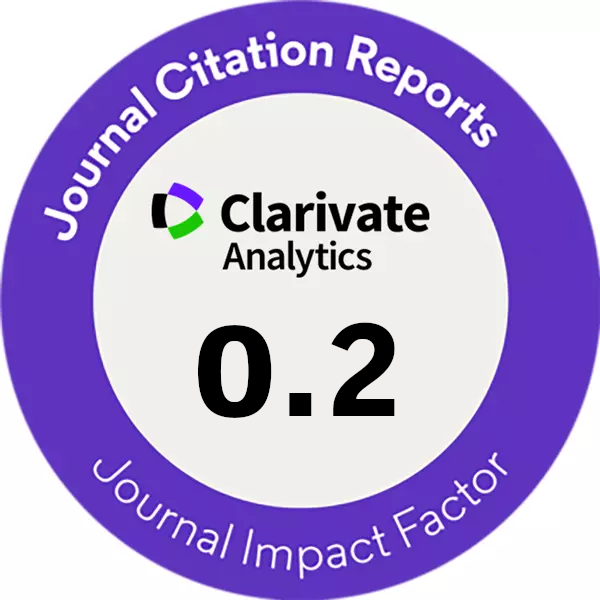THREE-PARAMETER CREEP DAMAGE CONSTITUTIVE MODEL AND ITS APPLICATION IN HYDRAULIC TUNNELLING
DOI:
https://doi.org/10.14311/CEJ.2016.03.0013Keywords:
Rheology; three-parameter H-K damage model; time-dependent deformationAbstract
Rock deformation is a time-dependent process, generally referred to as rheology. Especially for soft rock strata, design and construction of tunnel shall take full account of rheological properties of adjoining rocks. Based on classic three-parameter HK model (generalized Kelvin model), this paper proposes a three-parameter H-K damage model of which parameters attenuate with increase of equivalent strain, provides attenuation equation of model parameters in the first, second and third stage of creep deformation and introduces equivalent strain threshold value. When the equivalent strain is greater than the threshold value, the third stage of accelerating creep will be conducted. The three-parameter H-K damage model is used for numerical calculation of finite difference method FLAC3D and deformation features of soft rock with time under high ground stress are described based on diversion tunnel project of Jinping Hydropower Station, of which model parameters can be obtained by back analysis according to measured site data and BP neural network.
Downloads
References
Yang, C.H., Daemen, J.J., Yin, J.H.,1999. Experimental investigation of creep behavior of salt rock. International Journal of Rock Mechanics and Mining Sciences. 36(3), 233-242.
Li, Y.S., Xia, C.C., 2000. Time-dependent tests on intact rocks in uniaxial compression. International Journal of Rock Mechanics and Mining Sciences & Geomechanics Abstracts. 37(3), 467-475.
Enrico, M., Tsutomu, Y., 2001. A non-associated viscoplastic model for the behaviour of granite in triaxial Compression. Mechanics of Materials. 33(5), 283-293.
Shalabi, F.I., 2004. FE analysis of time-dependent behavior of tunneling in squeezing ground using two different creep models. Tunnel. Underground Space Technol. 20, 271-279.
Tsai, L.S., Hsieh, Y.M., Weng, M.C., Huang, T.H., Jeng, F.S., 2008. Time-dependent deformation behaviors of weak sandstones. Int. J. Rock Mech. Mining Sci. 45, 144-154.
Sun, J., 1999. Rheological behavior of geomaterials and its engineering application. Beijing: China Architecture and Building Press.
Itasca Consulting Group, 1997. FLAC3D, Fast Lagrange Analysis of Continua in 3 Dimensions, Version 3.0, User Manual. Minneapolis.
Guan, Z.C., Jiang, Y.J., Yoshihiko, T., Huang, H.W., 2007. A new rheological model and its application in mountain tunnelling. Tunnelling and Underground Space Technology. 23(3), 292-299.
Pellet, F., Hajdu, A., Deleruyelle, F., Besnus, F., [10] 2005. A viscoplastic model including anisotropic damage for the time dependent behaviour of rock. Int. J. Numer. Anal. Meth. Geomech. 29 (9), 941–970.
Shao, J., Chau, K., Feng, X., 2006. Modeling of anisotropic damage and creep deformation in brittle rocks. Int. J. Rock Mech. Min. Sci. 43 (4), 582–592.
Bhandari, A., Inoue, J., 2005. Continuum damage mechanics for hysteresis and fatigue of quasi-brittle materials and structures. Int. J. Numer. Anal. Meth. Geomech. 29 (11), 1087–1107.
Goodman, R.E., 1989. Introduction to Rock Mechanics, second ed. Wiley, New York.
Ahmad, F., Farshad, M.T., Ahmadreza, H., Arash, V., 2010. Analytical solution for the excavation of circular tunnels in a visco-elastic Burger’s material under hydrostatic stress field. Tunnelling and Underground Space Technology. 25(4), 297-304.
Guan, Z.C., Jiang, Y.J., Yoshihiko, T., 2008. Rheological parameter estimation for the prediction of long-term deformations in conventional tunneling. Tunnelling and Underground Space Technology. 24(3), 250-259.
Fang, K.T, Ma, C.X, 2001. Orthogonal design and uniform design. Beijing: Science Press.
Downloads
Published
Issue
Section
License
Copyright (c) 2023 Author

This work is licensed under a Creative Commons Attribution-NonCommercial 4.0 International License.
Authors who publish with this journal agree to the following terms:
- Authors retain copyright and grant the journal right of first publication with the work simultaneously licensed under a Creative Commons Attribution License that allows others to share the work with an acknowledgement of the work's authorship and initial publication in this journal.
- Authors are able to enter into separate, additional contractual arrangements for the non-exclusive distribution of the journal's published version of the work (e.g., post it to an institutional repository or publish it in a book), with an acknowledgement of its initial publication in this journal.
- Authors are permitted and encouraged to post their work online (e.g., in institutional repositories or on their website) prior to and during the submission process, as it can lead to productive exchanges, as well as earlier and greater citation of published work (See The Effect of Open Access).










